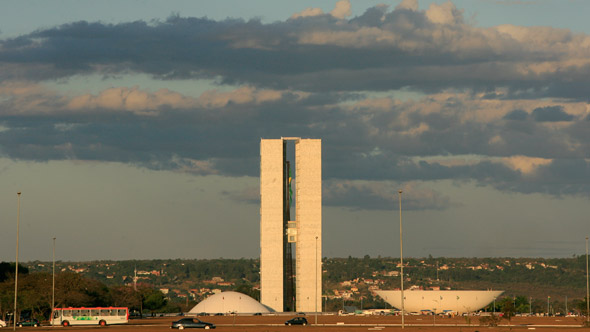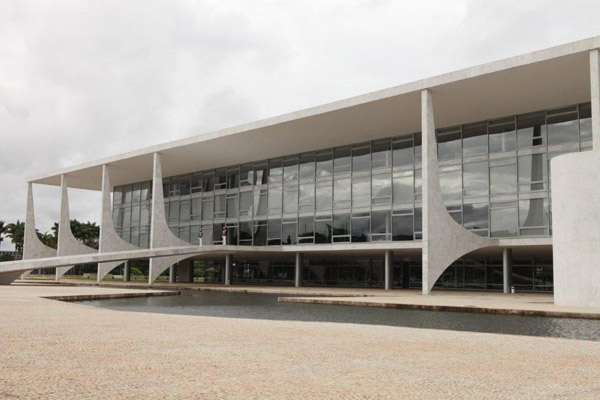World Cup & Tourism in Brasilia: White Elephant or Emerging Swan?
Brasilia has been chosen as one of the cities to welcome the next Football World Cup games and both tourism and trade are booming. But still, the capital of Brazil has to face some important challenges, such as transportation and infrastructure problems.

Construction for the World Cup is well under way, with the government announcing, this January, that 50% of Brasilia´s Mané Garrincha stadium has been completed and that it will be ready to hold its 7 scheduled World Cup matches.
Prior to the 2000 Olympic Games in Sydney many scoffed at the government’s plans to restore the derelict Darling Harbour area, complaining that an exorbitant amount of money was being thrown at a space that would be used for less than one month, but the government´s investment paid off as the city´s Darling Harbour has become one of Sydney´s most popular tourist attractions as well as being the new heart of the city´s business district and home to some of Sydney´s most expensive residential and commercial properties.
Having been chosen as one of Brazil´s 2014 World Cup venues, Brasilia looks set to follow in Darling Harbour´s footsteps and become a major tourist and business destination long after the 2014 World Cup winner has been decided. In a recent interview Governor of the Federal District, Agnelo Queiroz, expressed his belief in the “transformative power” of competitions such as the World Cup and the Olympic Games and current statistics (provided by the Ministry of Tourism, June 2012) prove that Brasilia is quickly becoming a fashionable stop on the tourist circuit, with tourism in the Federal District having increased 40% from 37,911 to 63,384 between 2010 and 2011, in comparison to the a rise of 5% in incoming tourists in Brazil as a whole (from 5,161,379 to 5,433,354) over the same period.
Construction for the World Cup is well under way, with the government announcing, this January, that 50% of Brasilia´s Mané Garrincha stadium has been completed and that it will be ready to hold its 7 scheduled World Cup matches including one quarter final (on the 5th of July). Shortage of hotel beds is an issue however with a current estimated shortfall of around 8, 000. To fill some of this gap the government has released state land valued at R$700 million and will spend some $R4 billion on works for a new “hotel sector” in the capital. According to Queiroz, the government also hopes to train some 10,000 people for the World Cup through its Qualificopa program which already has 2,000 graduates of which 52% are currently employed.
To cope with traffic congestion, in a city which was designed for half a million people but currently houses close to 2 million, Brazil´s President Dilma Rousseff has approved an urban transport project, including a Light Rail system, like Sydney´s own Metro Light Rail, which will cost an estimated $R30 billion. As Brasilia is a UNESCO World Heritage Site there are strict construction laws which means the government will need to be creative in order to move both residents and tourists around the city.
On arriving in Brasilia tourists should expect to be impressed by the stunningly modern architecture of this 51-year old city. With its award-winning JK Bridge (named after former President Juscelino Kubitschek de Oliveira who moved Brazil´s capital from Rio de Janeiro to Brasilia in 1960) and its Oscar Niemeyer – designed Cathedral – an awe-inspiring crown-like structure with an immense stained glass ceiling – Brasilia could become the new Berlin not just in terms of modern architecture but also in research and development, universities, IT companies, number of foreign embassies and maybe one day even tourism.
In its bid to woo IT businesses, before the end of this decade the government will also spend R$6 billion on its Digital Technology Park– the bidding process for the construction of which should begin next month – forecast to generate some 80 thousand new jobs and which has already attracted interest from IT giants Microsoft, Intel, Oracle, Cisco and Sun.

But whilst within Brasilia both tourism and trade are booming, unfortunately for a huge majority of those living on its periphery all that glitters is not gold.
The 2nd largest slum in Brazil exists just 30km from the Presidential Palace. According to the IBGE 2010 census Sol Nascente (Rising Sun), there are 56,483 residents living in 15,737 households with a lack of sanitation, security and healthcare, no scheduled rubbish collection and where the majority has to walk 2 kms down dust-covered (in the dry season) or mud-swamped (in the wet season) roads to get to the nearest bus stop to go to school or work. This is just one of 35 “subnormal settlements” – the definition of these areas given by the government – where illegal land appropriation has led to huge subdivisions rising up around the outskirts of the Capital. In an interview with Uniao Brasil conducted in 2010, The Federal District´s Under Secretary of Housing, Rafael Oliveira said that: “Today Sol Nascente has become a Regularized Area of Social Interest” / “Implementation of infrastructure is now going to commence and should be completed in the first quarter of 2012.”
R$209 million for drains, roads and constructing houses was made available by the government for these works. On a hugely positive note the company responsible for sanitation in the Federal District, CAESB (Federal District Company for Environmental Sanitation) is gaining an excellent international reputation as an expert in its field according to a recent interview with company President, Celio Biavati: “We have already made contact with European companies, and there is a Chinese group that has wanted to share know-how in order to improve basic sanitation issues in China. / After the catastrophe of Porto Principe in Haiti, the Inter American Bank of Development personally invited CAESB to contribute with ideas and know-how. / African countries have also shown interest in doing business with us. Our experience with condominium sanitation here at CAESB has allowed us to be in contact with companies in Peru, Bolivia and Colombia.”
Nevertheless in a TV report by the news channel R7 Brasilia broadcast in April 2012 (exactly when all the works were scheduled to have been completed) there was still no asphalt on the road. Mothers are complaining that their children have breathing problems due to the amount of dust in the air and the fact that there is still no regular bus service makes it difficult to take their children to a Doctor (in February 2012 bus companies threatened to stop circulating through Sol Nascente due to the damage caused to their vehicles because of state of the roads). The State Secretary for Public Works held a Public Hearing on the 5th of June which is one of the steps which must take place before the bidding process can be initiated. The budget has now risen to R$255 million but for the community´s population paved roads and a public bus service seems like little to ask from the country´s capital billed to be “a centre for human development and a technological hub” boasting “the highest number of college students and internet users” in Brazil (source: United World Limited, Dec 2011).
If the government can inject the same resources and effort into communities like Sol Nascente as it is into its developments for the World Cup and beyond it could become in Queiroz´s words “a symbol of civility”, possibly reaching its goal to “eliminate extreme poverty” and become Brazil´s shining example of modernism like Germany´s Berlin or Australia´s Sydney.